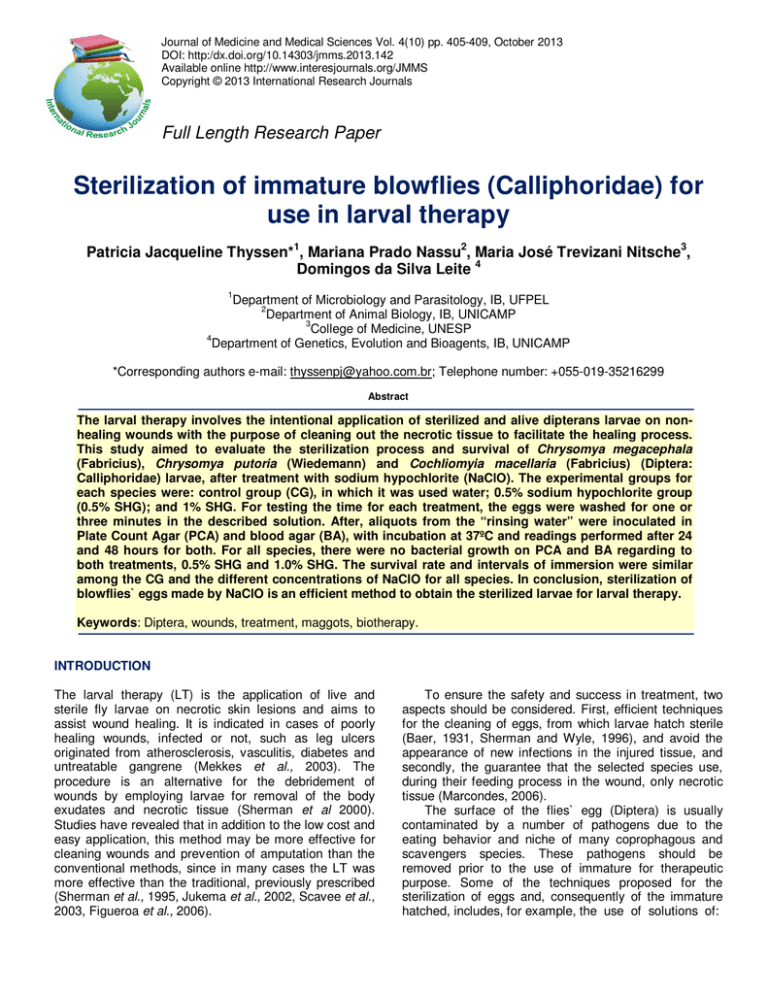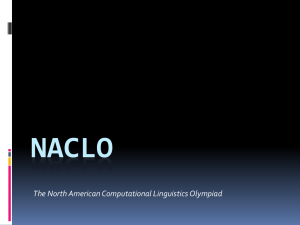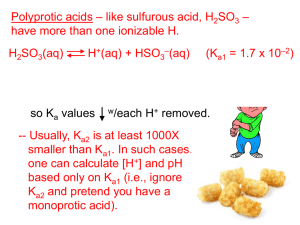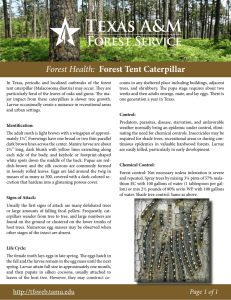Document 14233930
advertisement

Journal of Medicine and Medical Sciences Vol. 4(10) pp. 405-409, October 2013 DOI: http:/dx.doi.org/10.14303/jmms.2013.142 Available online http://www.interesjournals.org/JMMS Copyright © 2013 International Research Journals Full Length Research Paper Sterilization of immature blowflies (Calliphoridae) for use in larval therapy Patricia Jacqueline Thyssen*1, Mariana Prado Nassu2, Maria José Trevizani Nitsche3, Domingos da Silva Leite 4 1 Department of Microbiology and Parasitology, IB, UFPEL 2 Department of Animal Biology, IB, UNICAMP 3 College of Medicine, UNESP 4 Department of Genetics, Evolution and Bioagents, IB, UNICAMP *Corresponding authors e-mail: thyssenpj@yahoo.com.br; Telephone number: +055-019-35216299 Abstract The larval therapy involves the intentional application of sterilized and alive dipterans larvae on nonhealing wounds with the purpose of cleaning out the necrotic tissue to facilitate the healing process. This study aimed to evaluate the sterilization process and survival of Chrysomya megacephala (Fabricius), Chrysomya putoria (Wiedemann) and Cochliomyia macellaria (Fabricius) (Diptera: Calliphoridae) larvae, after treatment with sodium hypochlorite (NaClO). The experimental groups for each species were: control group (CG), in which it was used water; 0.5% sodium hypochlorite group (0.5% SHG); and 1% SHG. For testing the time for each treatment, the eggs were washed for one or three minutes in the described solution. After, aliquots from the “rinsing water” were inoculated in Plate Count Agar (PCA) and blood agar (BA), with incubation at 37ºC and readings performed after 24 and 48 hours for both. For all species, there were no bacterial growth on PCA and BA regarding to both treatments, 0.5% SHG and 1.0% SHG. The survival rate and intervals of immersion were similar among the CG and the different concentrations of NaClO for all species. In conclusion, sterilization of blowflies` eggs made by NaClO is an efficient method to obtain the sterilized larvae for larval therapy. Keywords: Diptera, wounds, treatment, maggots, biotherapy. INTRODUCTION The larval therapy (LT) is the application of live and sterile fly larvae on necrotic skin lesions and aims to assist wound healing. It is indicated in cases of poorly healing wounds, infected or not, such as leg ulcers originated from atherosclerosis, vasculitis, diabetes and untreatable gangrene (Mekkes et al., 2003). The procedure is an alternative for the debridement of wounds by employing larvae for removal of the body exudates and necrotic tissue (Sherman et al 2000). Studies have revealed that in addition to the low cost and easy application, this method may be more effective for cleaning wounds and prevention of amputation than the conventional methods, since in many cases the LT was more effective than the traditional, previously prescribed (Sherman et al., 1995, Jukema et al., 2002, Scavee et al., 2003, Figueroa et al., 2006). To ensure the safety and success in treatment, two aspects should be considered. First, efficient techniques for the cleaning of eggs, from which larvae hatch sterile (Baer, 1931, Sherman and Wyle, 1996), and avoid the appearance of new infections in the injured tissue, and secondly, the guarantee that the selected species use, during their feeding process in the wound, only necrotic tissue (Marcondes, 2006). The surface of the flies` egg (Diptera) is usually contaminated by a number of pathogens due to the eating behavior and niche of many coprophagous and scavengers species. These pathogens should be removed prior to the use of immature for therapeutic purpose. Some of the techniques proposed for the sterilization of eggs and, consequently of the immature hatched, includes, for example, the use of solutions of: 406 J. Med. Med. Sci. hydrochloric acid (Baer, 1931), mercuric chloride (Mackerras and Freney, 1932), sodium hypochlorite (Iversen, 1996, Figueroa et al., 2006 Echeverri et al., 2010), formalin and sodium chloride (Fine and Alexander 1934). The variation of these substances is associated mainly to the cost and the mechanisms by which they act to kill or inhibit the growth of microrganisms. Thus, the choice must be driven taking into account the cost/benefit and the condition of larval survival. In the last case, it is necessary to ascertain the degree of sensitivity of the eggs to the substances, which may vary in different species. Particularly, sodium hypochlorite (NaClO) has as main mechanisms of action the oxidant effect, the change in bacterial cell metabolism and irreversible enzyme inhibition (Estrela et al., 2002). Among its advantages, there are: fast action, effectiveness against a wide variety of microrganisms even at low concentrations, ease in preparation, dilution and application, low toxicity and low cost. The disadvantages are related to the corrosive property in metals and partial inactivation in the presence of residual organic matter attached to the surface to be treated (Paulino, 1999). Thus, NaClO, commonly found in the Brazilian market with the generic name of "bleach", becomes an agent easy to use for disinfection and sterilization processes. There are relatively few species known to be promising for use in LT. (Sherman et al 2000), Lucilia sericata and Phormia regina are the most commonly used species (Baer 1931) but in the tropics this information is even scarcer. Thus, this study evaluated procedures to ensure sterilization of eggs of Chrysomya megacephala (Fabricius), Chrysomya putoria (Wiedemann) and Cochliomyia macellaria (Fabricius) (Diptera: Calliphoridae) obtained in the laboratory for therapeutic purposes. We also measured the survival of immature post-treatment. These species were selected because of the ease of obtainment of specimens due to the wide geographical distribution in Brazil, for easy maintenance in the laboratory (Estrada et al., 2009) and scavenger behavior reported in the literature (Zumpt, 1965; Mendes e Linhares, 1993; Souza e Linhares, 1997; Carvalho et al., 2000; Carvalho et al., 2004). These tests were conducted to ascertain which reason of time versus concentration of the disinfectant would fulfill an effective role in the sterilization of blowfly eggs without, however, affect the survival of the immature. MATERIAL AND METHODS Obtaining especimens Colonies of adult specimens of Chrysomya megacephala, C. putoria and Cochliomyia macellaria were established from samples collected in the natural environment using traps made from plastic bottle (Moretti et al., 2009), which contained raw beef liver and chicken viscera as bait, exposed for 24 hours in Rubião Junior Campus and Farm Lageado/Edgardia UNESP, Botucatu, SP, Brazil (22º53'09"S: 48º26'42"W) and at Serra do Lopo, Extrema, MG (22º89'S: 46º33'W). The specimens harvested were anesthetized for approximately 60 seconds, by means of low temperatures (-20°C) to make the identifications through taxonomic key (Mello, 2003). After identification, adults of each species were placed separately in plastic transparent cages (30x30x50 cm) with openings coated of nylon. They were fed with sugar and water ad libitum, staying in a room under conditions of temperature (26 ± 1ºC), photoperiod (12:12 hours) and relative humidity (70 ± 10%) controlled. Disinfection tests Raw ground beef was offered as substrate for laying eggs. Due to the fragility of the wall of the egg in the early hours in the environment, tests were done after approximately eight hours of oviposition. Eggs were removed from the meat with the aid of a fine brush and deposited on moistened filter paper in distilled water, present within a sterile Petri dish to make its separation and counting. The treatment conditions for all species focus of this study are shown in Table 1. The concentrations were chosen based on studies conducted by Iversen (1996), whom used NaClO at 0.5% - also known as Dakin's solution (Paulino, 1999) - and Greenberg (1970), who noted that any concentrations from 0.01 to 2% could be suitable for the disinfection of the eggs of insects. Three replicates were performed for each test proposed, and for each species, groups of 20 eggs were immersed in the solutions and subsequently rinsed in distilled water to remove the excess sodium hypochlorite. The containers were shaken in all the immersions in order to ensure the same chemical contact with the surface of the eggs. All manipulations were performed in a laminar flow. After that, the eggs were placed on Petri dishes lined with filter paper moistened with sterile saline 0.9%. They were then kept in a climatic chamber (Fanem model 387) until hatching, under the same controlled conditions mentioned for adults. After hatching, the immatures were counted to determine the effect of treatment on survival of the species. Larvae were kept under similar conditions without offering food, counted and discarded 1, 12, 24, 36, 48 and 60 hours after hatching. Analysis of variance of one factor (ANOVA) was performed to identify possible differences in hatching rate and larval survival compared to each treatment. Multiple comparison test of Duncan was performed to compare Thyssen et al. 407 Table 1. Outline of the experimental groups to determine the survival of immature for use in larval therapy Treatments Concentrations of the substance Experimental groups I II NaClO 0.5% NaClO 1.0% Treatment time Rinses Control group I Sterile distiled water Experimental groups III IV NaClO 0.5% NaClO 1.0% Control group II Sterile distiled water One minute Three minutes Two and three minutes in sterile distiled water Table 2. Survival rate (%) of Chrysomya megacephala immatures to different treatments (exposure time and concentration of NaClO) after 12, 24, 36, 48 and 60 hours (h) post-hatching Treatment time One minute Three minutes [NaClO] 0% 0.5% 1.0% 12h 100.0 (A) 87.5 (A) 100.0 (A) 0% 0.5% 1.0% 97.5 (A) 90.0 (A) 92.5 (A) Survival rate (%) hours post-hatching 24h 36h 48h 82.5 (B) 47.5 (B) 0 (C) 67.5 (B) 82.5 (B) 0 (C) 87.5 (B) 62.5 (B) 5.0 (C) 70.0 (B) 82.5 (B) 95.0 (B) 72.5 (B) 82.5 (B) 85.0 (B) 0 (C) 5.0 (C) 2.5 (C) 60h 0 (C) 0 (C) 0 (C) 0 (C) 0 (C) 0 (C) *Means with the same letter in the same line are not significantly different according Duncan test survival rates at different times of observation. For all analyzes it was considered a global significance level of 5% and the statistical package SAS® (SAS Inst 2006) was used. Microbiological tests One ml aliquots of water used in the last rinse of the eggs from each group were transferred into test tubes containing nine ml of sterile 0.1% peptone water to obtain the first dilution (10-1), which was homogenized by vortex for three minutes. From the initial dilution the remaining dilutions were made up - 10-2, 10-3, 10-4 and 10-5 - for inoculation in Petri dishes with culture medium. The media used were "Plate Count Agar" (PCA), non-selective, and blood agar, that allows the growth of bacteria with hemolytic properties. The plates were sown by scattering surface and incubated in a bacteriological incubator at 37°C to proceed the reading of the results after 48 hours. RESULTS AND DISCUSSION With respect to hatching rate, the three species had no significant variation between control and treated groups. This was observed both in relation to the concentration of the NaClO (C. megacephala: F = 1.27 p = 0.2884; C putoria: F = 0.15, p = 0.8623 and C. macellaria: F= 0.05; p= 0.9491) as to immersion times (C. megacephala: F = 1.30, p = 0.2599; C. putoria: F = 0.01, p = 0.9153 and C. macellaria: F= 0.10; p= 0.7542) (Table 2, 3 e 4). This indicates that C. putoria, C. megacephala and C. macellaria showed good tolerance and resistance to NaClO concentrations in the immersion times tested. The only comparison showing significant difference on the tests of the three species is the one related to the moments of observation. The longer they stay without food, the lower is the survival of larvae (C. megacephala: F = 174.13; p <0.0001; C. putoria F = 95.63, p <0.0001 and C. macellaria: F = 109.66; p <0.0001), pointing that the cause of larval death is starvation and not the sterilization procedure. From the microbiological tests, it was possible to observe after 24 and 48 hours of incubation, the absence of bacterial growth on the plates which had been inoculated material from treated groups (Figure 1). Additionally, the absence of bacterial growth on a selective medium for hemolytic bacteria, such as blood agar, confirmed that the use of this agent makes safe the subsequent application of larvae on the lesions in order to the biotherapic treatment. In the same way, Figueroa et al. (2006) reported the application of sterile larvae of Lucilia sericata Meigen (Diptera: Calliphoridae) in patients with chronic ulcers. 408 J. Med. Med. Sci. Table 3. Survival rate (%) of Chrysomya putoria immatures to different treatments (exposure time and concentration of NaClO) after 12, 24, 36, 48 and 60 hours (h) post-hatching Survival rate (%) hours post-hatching Treatment time [NaClO] 12h 24h 36h 48h 60h 0% 90.0 (A) 82.5 (A) 37.5 (B) 22.5 (B) 0 (C) One minute 0.5% 57.5 (A) 87.5 (A) 37.5 (B) 40.0 (B) 0 (C) 1.0% 92.5 (A) 80.0 (A) 45.0 (B) 47.5 (B) 0 (C) 0% 0.5% 1.0% Three minutes 92.5 (A) 70.0 (A) 72.5 (A) 82.5 (A) 85.0 (A) 77.5 (A) 30.0 (B) 40.0 (B) 27.5 (B) 32.5 (B) 57.5 (B) 47.5 (B) *Means with the same letter in the same line are not significantly different according Duncan test Table 4. Survival rate (%) of Cochliomyia macellaria immatures to different treatments (exposure time and concentration of NaClO) after 12, 24, 36, 48 and 60 hours (h) posthatching Survival rate (%) hours post-hatching Treatment time [NaClO] 12h 24h 36h 48h 60h One minute 0% 0.5% 97.5 (A) 95.0 (A) 92.5 (A) 80.0 (A) 87.5 (A) 77.5 (A) 37.5 (B) 65.0 (B) 0 (C) 0 (C) Three minutes 0% 0,5% 95.0 (A) 85.0 (A) 87.5 (A) 92.5 (A) 70.0 (A) 82.5 (A) 52.5 (B) 50.0 (B) 0 (C) 0 (C) *Means with the same letter in the same line are not significantly different according Duncan test A B Figure 1. Petri dishes containing culture media PCA (left) and blood agar (right) after incubation for 48 hours, showing numerous colony forming units (CFU) in the control group (A) and absence of CFU to attest sterility in the group that received treatment with NaClO at 0.5% (B) 0 (C) 0 (C) 0 (C) Thyssen et al. 409 These larvae were obtained from eggs treated with 0.5% NaClO followed by 10% formalin and sterility confirmed by negative results in inoculations performed on blood agar and broth. Among the advantages of making use of NaClO, there are its low cost, easy acquisition and rapid action, confirmed by the results obtained here for the times of one and three minutes of immersion, and for being a broad-spectrum bactericidal and virucidal (Paulino, 1999). The results obtained in this study shows that disinfection of the eggs of C. megacephala, C. putoria and C. macellaria made with NaClO is effective for obtaining sterile larvae for use in larval therapy. We suggest the treatment with NaClO at 0.5% for one minute, because it uses enough chemicals and amount of time for the safe cleaning of the larvae. We caution though that microbiological testing with PCA and blood agar should be part of the routine investigation of sterilization so the larval therapy can be used safely. ACKNOWLEDGMENTS Part of this work was supported by São Paulo State Foundation for the Support of Research (FAPESP), grant nº 2012/06033-5. REFERENCES Baer WS (1931). The treatment of chronic osteomyelitis with the maggot (larva of the blowfly). J Bone Joint Surg 13: 438-474. Carvalho LML, Thyssen PJ, Goff ML, Linhares AX (2004). Observations on the succession pattern of necrophagous insects on a pig carcass in an urban area of southeastern Brazil. Aggrawal`s I J For Med Toxicol 5: 33-39. Carvalho LML, Thyssen PJ, Linhares AX, Palhares FB (2000). A checklist of arthropods associated with carrion and human corpses in southeastern Brazil. Mem Inst Oswaldo Cruz 95: 135-138. Echeverri MIW, Álvarez CR, Higuita SHE, Idárraga JCW, Franco MME (2010). Lucilia eximia (Diptera: Callphoridae), uma nueva alternativa para La terapia larval y reporte de casos en Colombia. Iatreia 23: 107-116. Estrada DA, Grella MD, Thyssen PJ, Linhares AX (2009). Taxa de Desenvolvimento de Chrysomya albiceps (Wiedemann) (Diptera: Calliphoridae) em dieta artificial acrescida de tecido animal para uso forense. Neotropical Entomol 38: 203-207. Estrela C, Estrela CRA, Barbin EL, Spanó JCE, Marchesan MA, Pécora JD (2002). Mechanism of action of sodium hypochlorite. Braz Dent J 13: 113-117. Figueroa L, Uherek F, Yusef P, López L, Flores J (2006). Maggot therapy in patients with chronic skin ulcers. Parasitol Latinoam 61: 160-164. Fine A, Alexander H (1934). Maggot Therapy Technique and Clinical Application. J Bone Join and Joint Surg 16: 572-582. Greenberg B (1970). Sterilizing procedures and agents, antibiotics and inhibitors in mass rearing of insects. Bull. ESA 16: 31-36. Iversen E (1996). Methods of Treating Injuries of Work Animals. Buffalo Bull 15: 34-37. Jukema GN, Menon AG, Bernards AT, Steenvoorde P, Rastegar AT, Van Dissel AT (2002). Amputation-Sparing Treatment by Nature: “Surgical” Maggots Revisited. Clin Infect Dis 35: 1566-1571. Mackerras MJ, Freney MR (1932). Observations on the nutrition of maggots of Australian blow-flies. J. Exp. Biol. 10: 239-246. Marcondes CB (2006). Terapia Larval: de lesões de pele causadas por diabetes e outras doenças. Santa Catarina, Editora da UFSC, 89p. Mekkes JR, Loots MAM, Van Der Wal AC, Bos JD (2003). Causes, investigation and treatment of leg ulceration. Br. J. Dermantol 148(3): 388-401. Mello RP (2003) Chave para identificação das formas adultas das espécies da família Calliphoridae (Diptera, Brachycera, Cyclorrhapha) encontradas no Brasil. Entomol y Vect 10: 255-268. Mendes J, Linhares AX (1993). Atratividade por iscas e estágios de desenvolvimento ovariano em fêmeas de várias espécies sinantrópicas de Calliphoridae (Diptera). Rev Bras Entomol 37: 157166. Moretti TC, Thyssen PJ, Solis DR (2009). Breeding of the Scuttle Fly Megaselia scalaris in a fish Carcass and Implications for the use in Forensic Entomology (Diptera: Phoridae). Entomol Gen 31: 349353. Paulino CA (1999). Anti-sépticos e desinfetantes. In Spinosa HS, Gorniak SL, Bernardi MM Farmacologia Aplicada à Medicina Veterinária, 2nd ed. Rio de Janeiro, Guanabara Koogan: 440-452. SAS Inst (2006). SAS user’s guide: statistics, 6th ed. USA, Cary, Statistical Analysis System Institute Inc. Scavée V, Polis FX, Schoevaerdts JC (2003). Maggot Therapy : Many hands make light work. Acta Chir Belg 103, 405-407. Sherman RA, Hall MJR, Thomas S (2000). Medical Maggots: an Ancient Remedy for some Contemporary Afflictions. Ann Rev Entomol 45: 55-81. Sherman RA, Wyle FA (1996). Low-cost, low-maintenance rearing of maggots in hospitals, clinics and schools. Am J Trop Med 54: 38-41. Sherman RA, Wyle FA, Vulpe M (1995). Maggot therapy for treating pressure ulcers in spinal cord injury patients. J Spinal Cord Med 18: 71-74. Souza AM, Linhares AX (1997). Diptera and Coleoptera of potential forensic importance in Southeastern Brazil: relative abundance and seasonality. Med Vet Entomol 11: 8-12. Zumpt F (1965) Myiasis in man and animals in the old world. Butherworths, London. How to cite this article: Thyssen PJ, Nassu MP, Nitsche MJT, Leite DS (2013). Sterilization of immature blowflies (Calliphoridae) for use in larval therapy. J. Med. Med. Sci. 4(10):405-409






